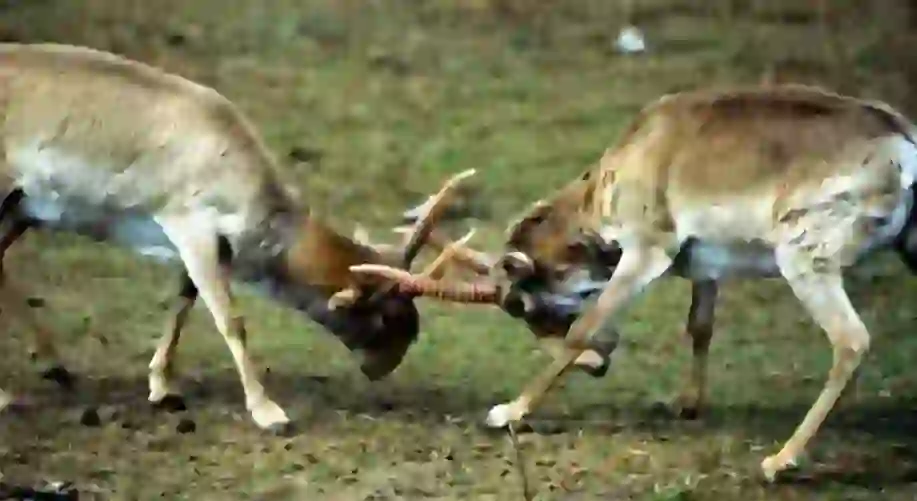
Saiga
Saiga
Saiga
Do you know saiga, a herbivorous animal with a very distinctive large nose? Saiga is a mysterious and powerful animal that has survived for tens of thousands of years in harsh environments by evolving in its own way. However, despite having a distinctive face that you can’t forget once you see it, it is also an animal with very low recognition and very few people know about it. In this article, let’s take a look at the characteristics and secrets of saiga, as well as its history and life!
Saiga Basic Infomation
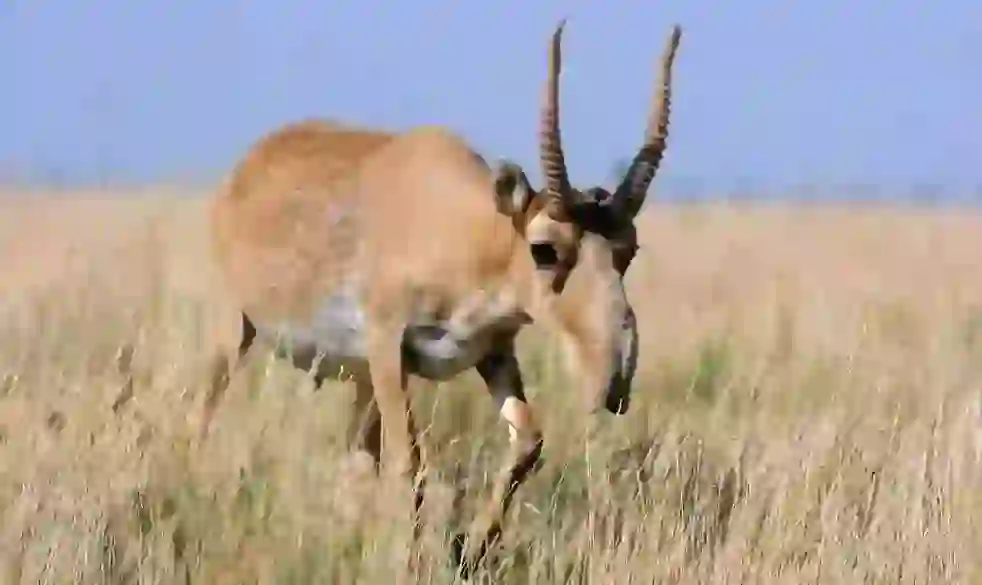
Mammalia-Cetartiodactyla-Bovidae-Saiga genus.
Length:108〜150cm. Weight:male 30~50Kg female 21~40Kg.
Saiga is a herbivorous animal belonging to the saiga genus of the bovid family that lives in grasslands and deserts in Central Asia (Kazakhstan, Russia, Uzbekistan, Mongolia, etc.). The saiga genus consists of only two subspecies, saiga and Mongolian saiga.
The color of saiga’s body varies depending on the season. In summer, the whole body is yellowish-brown with white on the face and abdomen, and in winter, the whole body becomes whitish.
The biggest feature of saiga is its large nose that covers most of its face. Its nose, which looks like a shortened elephant’s nose or a long and large hose, is soft and moves well. Horns grow only on males and are about 20-40 cm long and slightly curved upward.
Saigas reach sexual maturity at about one year of age and can reproduce. The gestation period of saigas is about 150 days, and females usually give birth to 1 to 3 (usually 2) babies at a time. They are very prolific and can produce about 20 offspring in their 10-year lifespan.
Saiga Q&A

Where does saiga get its name?
I could not find any supporting documents, but there seems to be a theory that the name "saiga" comes from the Russian word "sajgák", which means "a kind of suede".
By the way, the scientific name of saiga is "Saiga tatarica".
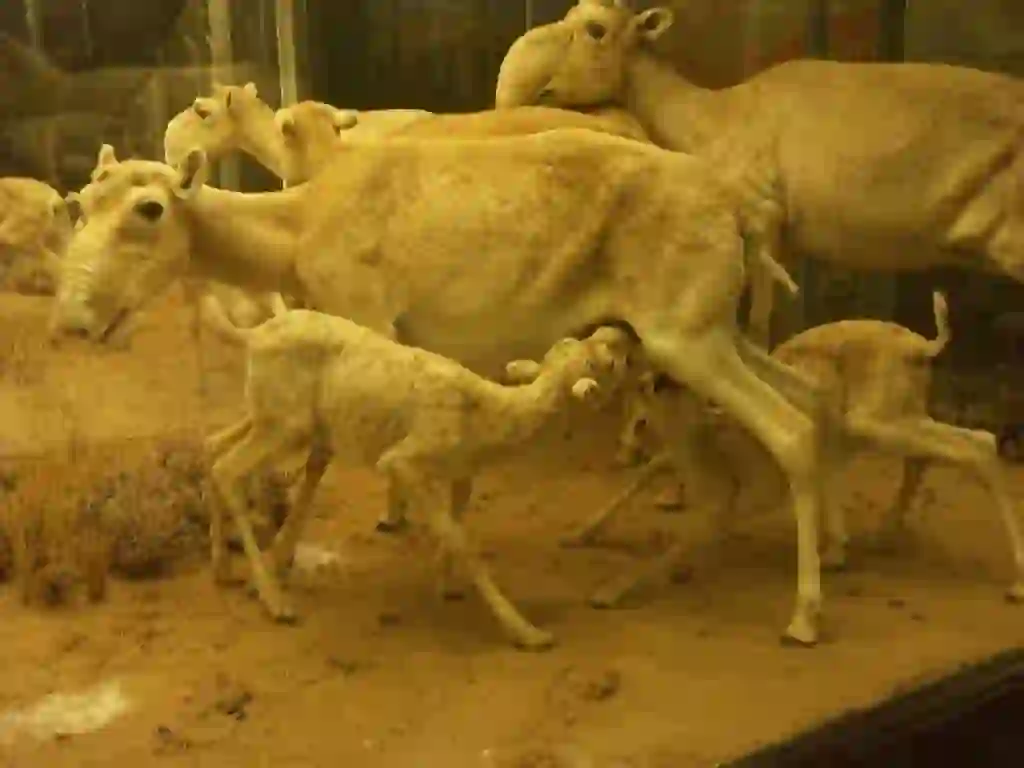
Why does saiga live there?
Saigas are distributed in Central Asia (Kazakhstan, Russia, Uzbekistan, Mongolia, etc.).
The ancestors of saigas diverged during the Ice Age and proliferated explosively throughout Central Asia. They are thought to have once inhabited a very wide range from the British Isles in Europe to Yukon in North America.
Even in the 20th century, there were more than 2 million saigas living in the wild, but their population and habitat have decreased and narrowed year by year due to human hunting pressure and environmental destruction.
It is not clear why saigas live in Central Asia, but one of the reasons may be that they have evolved to suit living in grasslands and deserts.
Saigas have a nose with a special function, speed and stamina to run at up to 90km/h for 5 to 10 minutes to escape from predators, and strength to survive in a harsh environment that is hot and cold and has little hiding place.

What does saiga eat?
Saigas are herbivorous animals and eat plants (grasses, herbs, leaves, etc.) and lichens (mosses) that grow in the grasslands.
During the summer, they tend to look for food in the relatively cool mornings and evenings, and rest during the hot and sunny days.
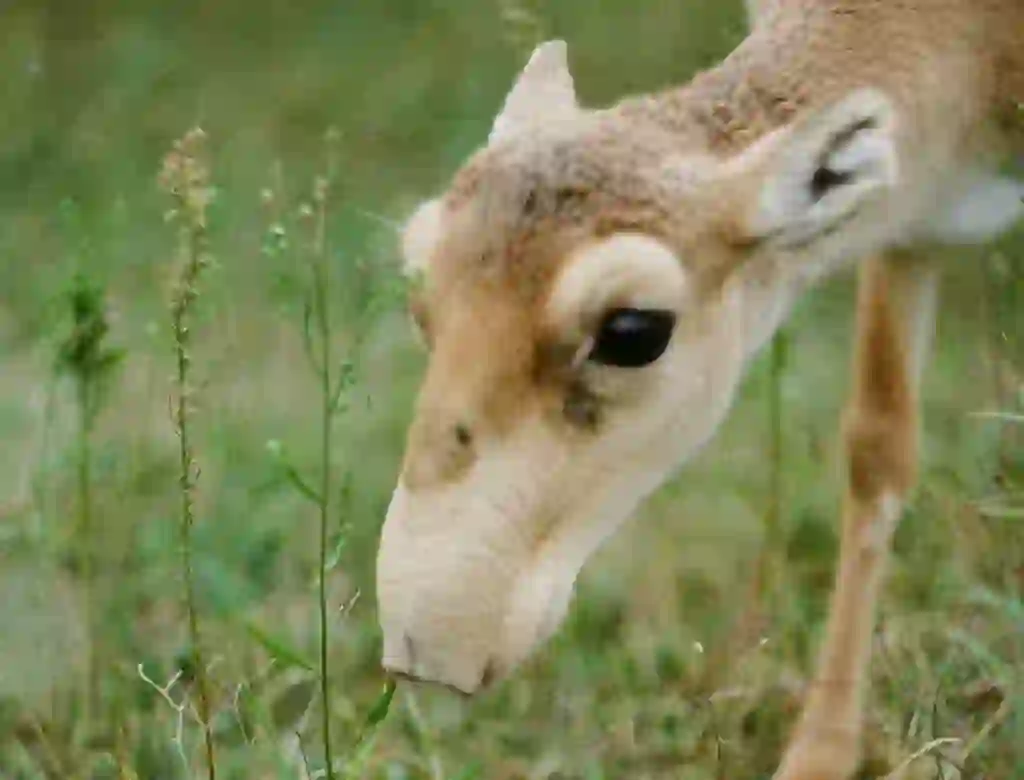
Why is saiga's nose big?
One of the characteristics of saigas is their large nose, which is unforgettable once you see it. But why do saigas have such a big nose? The reason is related to where saigas live.
The grasslands and deserts of Central Asia where saigas live are harsh environments, where the temperature can exceed 40°C in summer and drop below -30°C in winter.
Therefore, saigas are thought to reduce the damage to their bodies by inhaling air through their nose, cooling it in summer and warming it in winter, and giving it a moderate humidity before taking it into their lungs.
Saigas' large nose also acts as an air purifier. When a herd of saigas runs through the dry grasslands or deserts, a tremendous amount of dust is raised. Therefore, saigas are said to use their nose to clean the air before taking it into their lungs, so that they can breathe efficiently without inhaling dust and other particles.
Saigas also use their nose to make sounds to communicate with their mates or to appeal to the opposite sex. Saigas' nose has been found to have functions similar to an air conditioner, a humidifier, an air purifier, and a loudspeaker at the present point, but further research may reveal more roles in the future.

Is it true that saiga makes a harem?
It's true.
When male saigas enter the breeding season, they start to fight with each other over females. When they fight, they first make a loud roar from their nose, asserting their size and strength. If the other male does not back down from the roar, they use their horns and sometimes fight fiercely until one of them dies.
The male who wins the fight leads 30 to 50 females and forms a harem to mate. However, the male who leads the harem uses up most of his strength during the breeding season, so his mortality rate becomes very high afterwards.
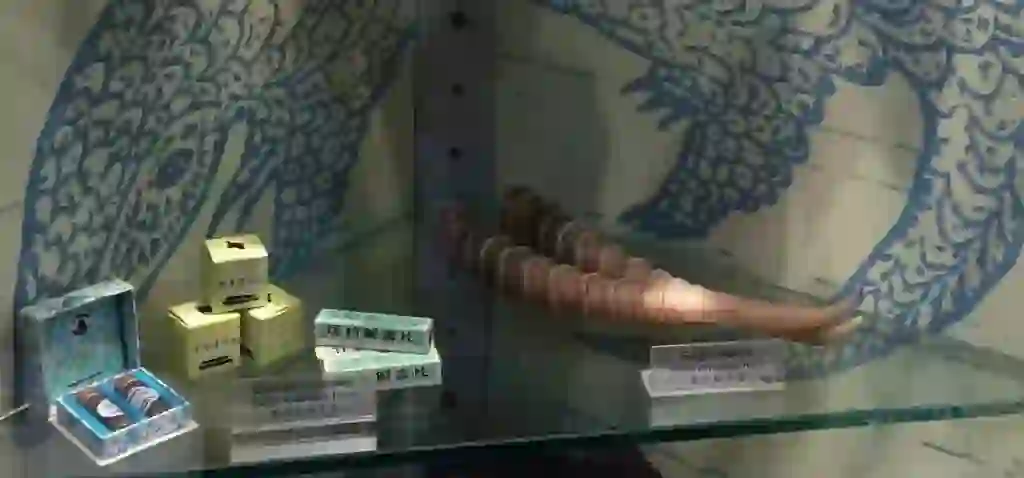
Is it true that saiga's horns can be used as medicine?
It's true.
Saiga horns are called “antelope horns” and are used as ingredients for traditional Chinese medicine.
Antelope horns have a calming effect and have been used in many traditional Chinese medicines to ease nervous tension. Perhaps some people have unknowingly ingested them.
However, since saiga horns only grow on males, wild saigas were overhunted for their horns, resulting in a severe imbalance between males and females. In addition to the imbalance, various factors have increased the risk of saiga extinction.
As a result, regulations on harvesting and exporting wild saigas have been tightened, making it difficult to obtain new antelope horns.
Currently, there is a growing movement to substitute antelope horns with water buffalo horns, “water buffalo horns”.

Is it true that saiga has ever died en masse?
It's true.
In the spring of 2015, about 2 million saigas died mysteriously in Kazakhstan. Initially, various speculations were made, such as an unknown infectious disease or a deliberate poisoning, but the cause of the mass die-off was unknown.
Then in 2018, the reason why saigas died massively was finally revealed. It was a bacterium called “Pasteurella multocida” that existed in the large nose of saigas, which was their characteristic feature.
This bacterium multiplied excessively due to abnormal weather conditions of high temperature and humidity that lasted for several years. As a result, the saigas’ bodies could not withstand it and developed hemorrhagic septicemia and died.
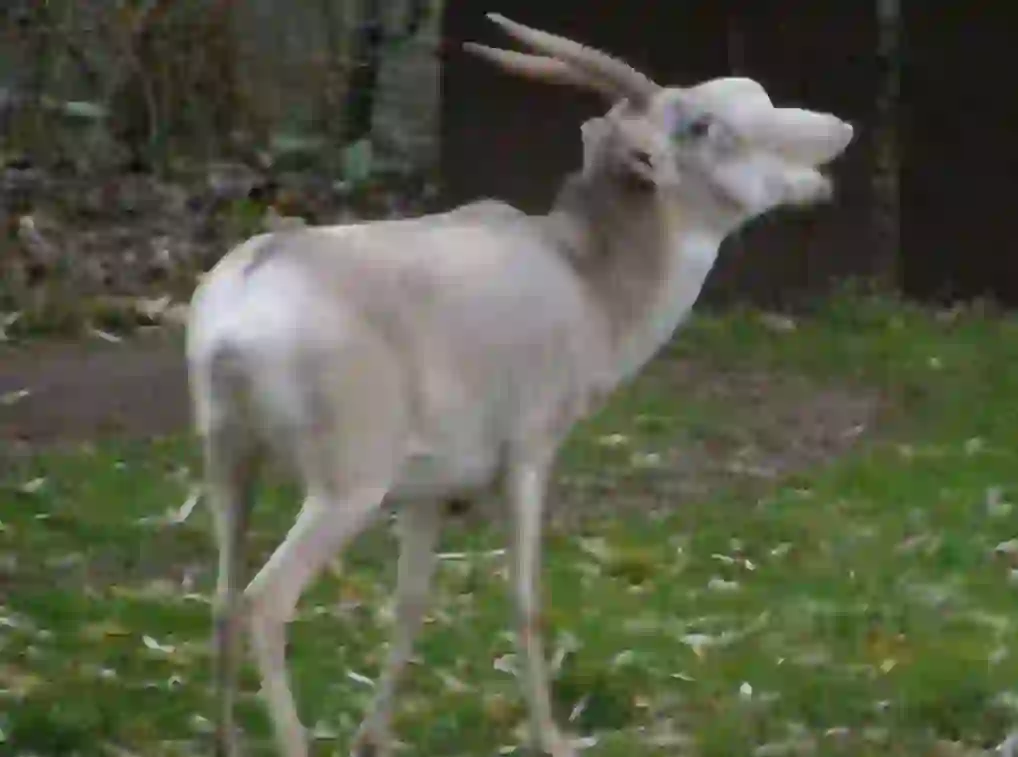
Can saiga be kept as a pet?
When breeding rare animals at home, it is necessary to follow the established laws in some countries. This time, we will introduce whether it is possible to breed Saiga at home in Japan.
Saigas are listed in Appendix II of the Washington Convention as species that are not necessarily threatened with extinction but may become so unless trade is regulated.
Animals listed in Appendix II can be traded for commercial purposes under certain conditions.
However, for saigas, although they are listed in Appendix II, it was decided at the 18th Conference of the Parties to the Washington Convention held in August 2019 to “set the export quota for wild specimens for commercial purposes to zero”.Therefore, trade for commercial purposes is basically not possible.
As a result, it is almost impossible to import saigas as pets.
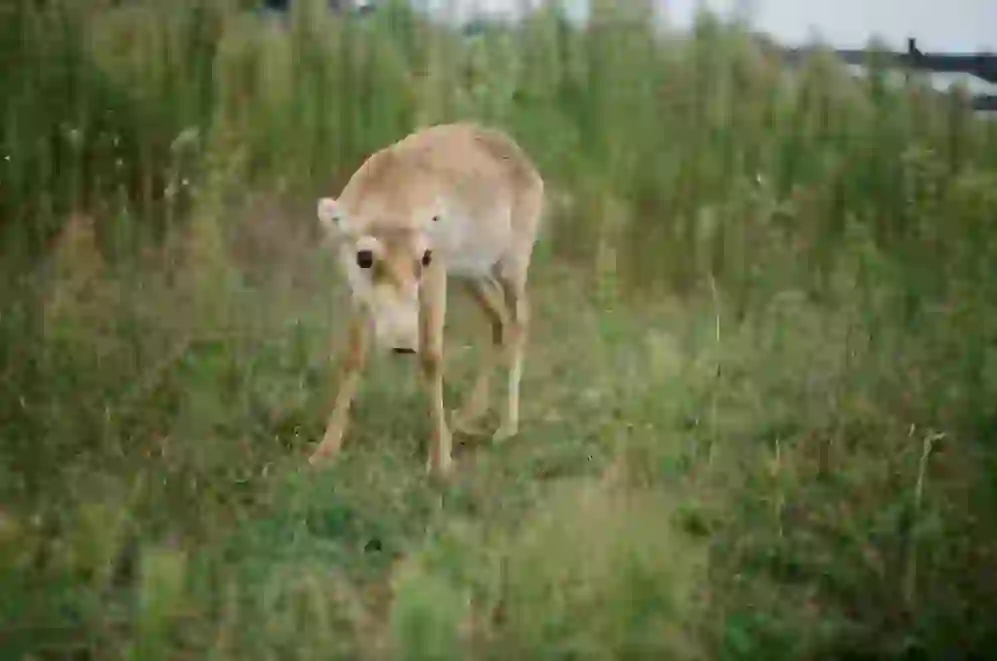
Is there a place in Japan where you can see saiga?
Unfortunately, there is no zoo in Japan that breeds and exhibits saigas at the moment. Also, considering the conservation status of saigas, the possibility of them coming to Japanese zoos in the future is very low.
However, there was a facility called “Japan Kamoshika Center” in Mie Prefecture that used to breed a saiga named “Russian”. Sadly, Russian died and the Japan Kamoshika Center closed in 2006, but his specimen is stored at the “Mie Prefectural Museum” in the same prefecture.
By the way, even if you look overseas, there are only a few zoos that breed saigas, but currently they seem to be bred at the “Moscow Zoo” in Russia.
They used to be bred at the “San Diego Zoo” in the United States and the “Cologne Zoo” in Germany, and especially at the San Diego Zoo, more than 100 cubs were born.
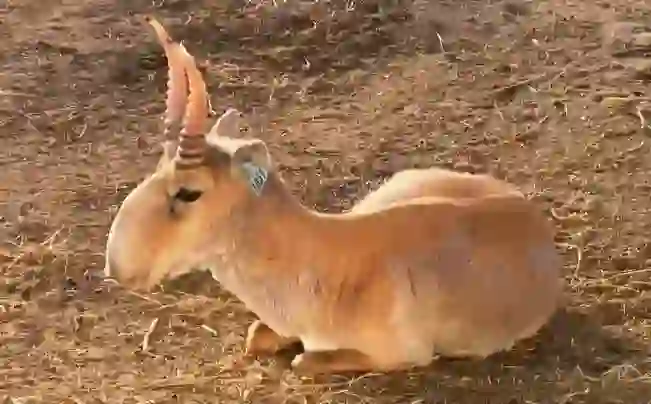
What is the lifespan of saiga?
There is no accurate information on the lifespan of saigas, but it is estimated to be about 10 to 12 years.
However, some researchers think that the average lifespan is about 5 years, considering that they live in harsh environments and have many predators.

What enemies does saiga have?
The natural predators of saigas in the wild are carnivorous animals such as wolves, foxes, and birds of prey.Especially newborns are often targeted and attacked by these carnivorous animals.
But for saigas, the biggest predator is us humans.
It is estimated that the population of saigas once exceeded 2 million, but they were poached for their meat, skin, and horns, and their numbers decreased greatly. Especially before and after the collapse of the Soviet Union, poaching and environmental destruction progressed rapidly, and their population decreased by 95%, and they became endangered.
The situation of saigas in the wild is not stable, but there is a growing movement to protect them internationally.
Environmental groups and NGOs such as the Saiga Conservation Alliance (SCA) and the Association for the Conservation of Biodiversity of Kazakhstan, as well as researchers, have taken initiatives such as setting up protected areas, educating people in Central Asia about saigas, and strengthening the crackdown on poaching.
Saigas were listed in Appendix II of the Washington Convention in 1995, and in 2002 they were classified as CR (Critically Endangered) in the IUCN Red List, which means that they have a very high risk of extinction in the wild in the near future.

Would you like to become a part of the 'Animalbook.jp'?
Turn your knowledge into Q&A and share it with the world. ※Publication will be activated after purchase. Let's share information together!
Saiga Type of List
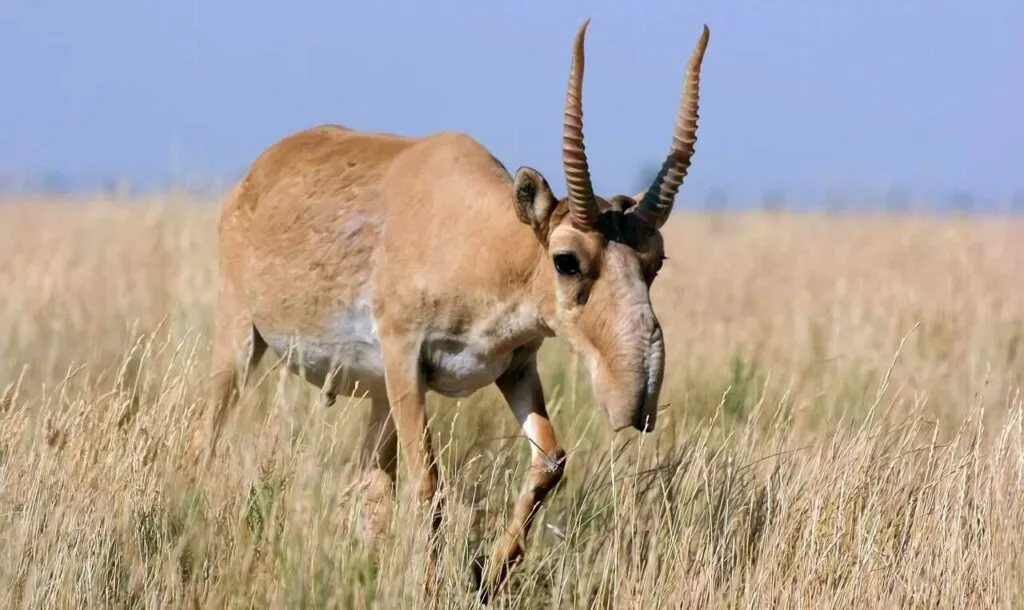
・Saiga ・Mongolian Saiga
Information
Congratulations! You are the first commenter!

Create Your Favorite List!
Saiga
Save the animals you love! Build your own list to quickly revisit your favorites later.

Would you like to leave a comment?
※Please note: This is for the purchase of rights to post comments within the article.
Find Your Favorites!
Our shop offers a unique and attractive selection of goods themed around various animals.
Saiga References

- 環境省「ワシントン条約第18回締約国会議の結果概要について」 https://www.env.go.jp/press/107111.html
- 三重県総合博物館「所蔵資料検索 サイガ」 https://www.bunka.pref.mie.lg.jp/MieMu/da/detail?mngnum=730
- ナショナルジオグラフィック「20万頭ものサイガ大量死、原因は細菌の増殖だった」 https://natgeo.nikkeibp.co.jp/atcl/news/18/013100045/
- ナショナルジオグラフィック「絶滅危惧種サイガが大量死、生息数が半減」 https://natgeo.nikkeibp.co.jp/atcl/news/15/b/110600049/
- 鳥取大学乾燥地研究センター「乾燥地の動植物」 https://www.alrc.tottori-u.ac.jp/japanese/sabaku_hakase/sabaku03.html
- azANIMALS「Saiga」 https://a-z-animals.com/animals/saiga/
- San Diego Zoo Wildlife Alliance「Saiga」 https://animals.sandiegozoo.org/animals/saiga
- Science Blog「Saga of the Saiga」 https://science.sandiegozoo.org/science-blog/saga-saiga
- MONTSAME「WWFモンゴルのガントルガ生物学博士: モンゴルサイガの7割が双子出産」 https://montsame.mn/jp/read/226592
Saiga Introduction of media used

出典:https://commons.wikimedia.org/wiki/File:Saiga_tartarica.jpg

出典:https://commons.wikimedia.org/wiki/File:Saigaherd.JPG

出典:https://unsplash.com/photos/OQlM0Sa8xEE

出典:https://unsplash.com/photos/QAo1OSLaANI

出典:https://commons.wikimedia.org/wiki/File:Saiga_tatarica.jpg

出典:https://unsplash.com/photos/IFWBwBAGGO8

enemy
出典:https://pixabay.com/images/id-2058902/

enemy
出典:https://pixabay.com/images/id-563535/

Help Enrich Our Animalbook.jp with Your Media!
We are constantly looking to expand and enrich our Animalbook.jp with amazing photos and videos of animals. If you have any media that you'd like to share, please contribute and help us showcase the beauty and diversity of the animal kingdom. Your submissions will be credited and featured in our encyclopedia, reaching a wide audience of animal lovers.
















